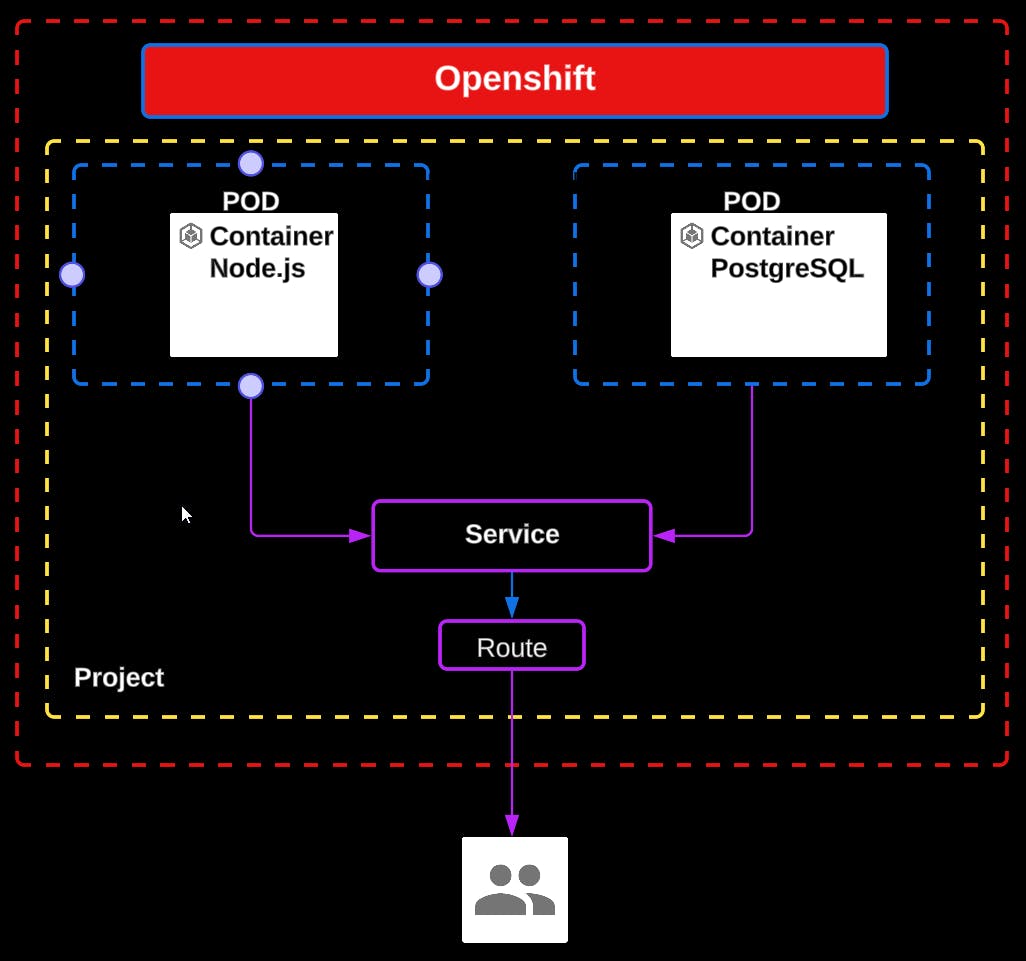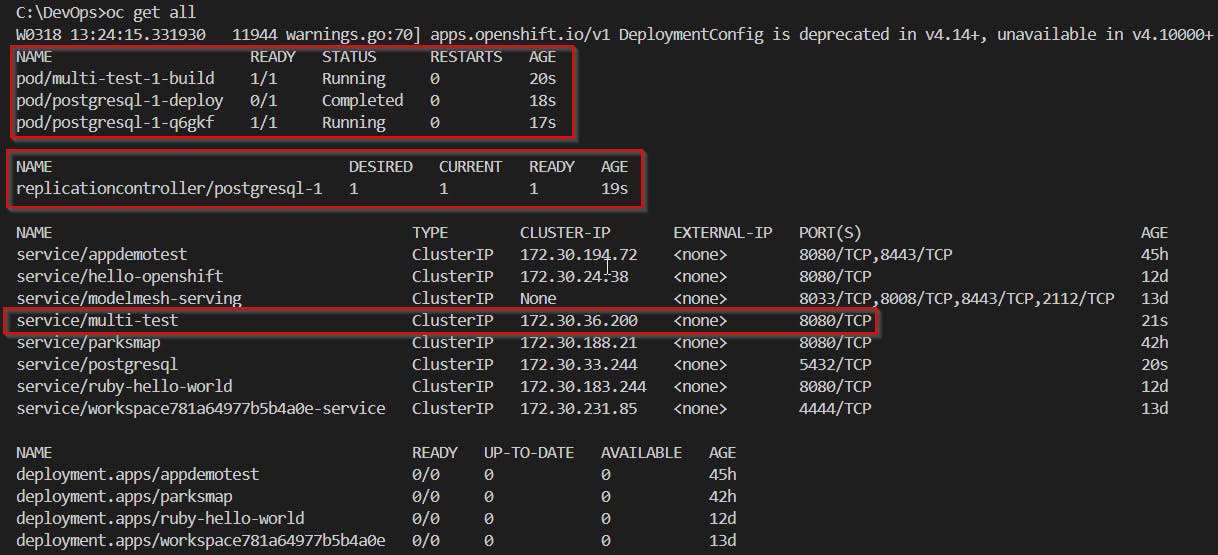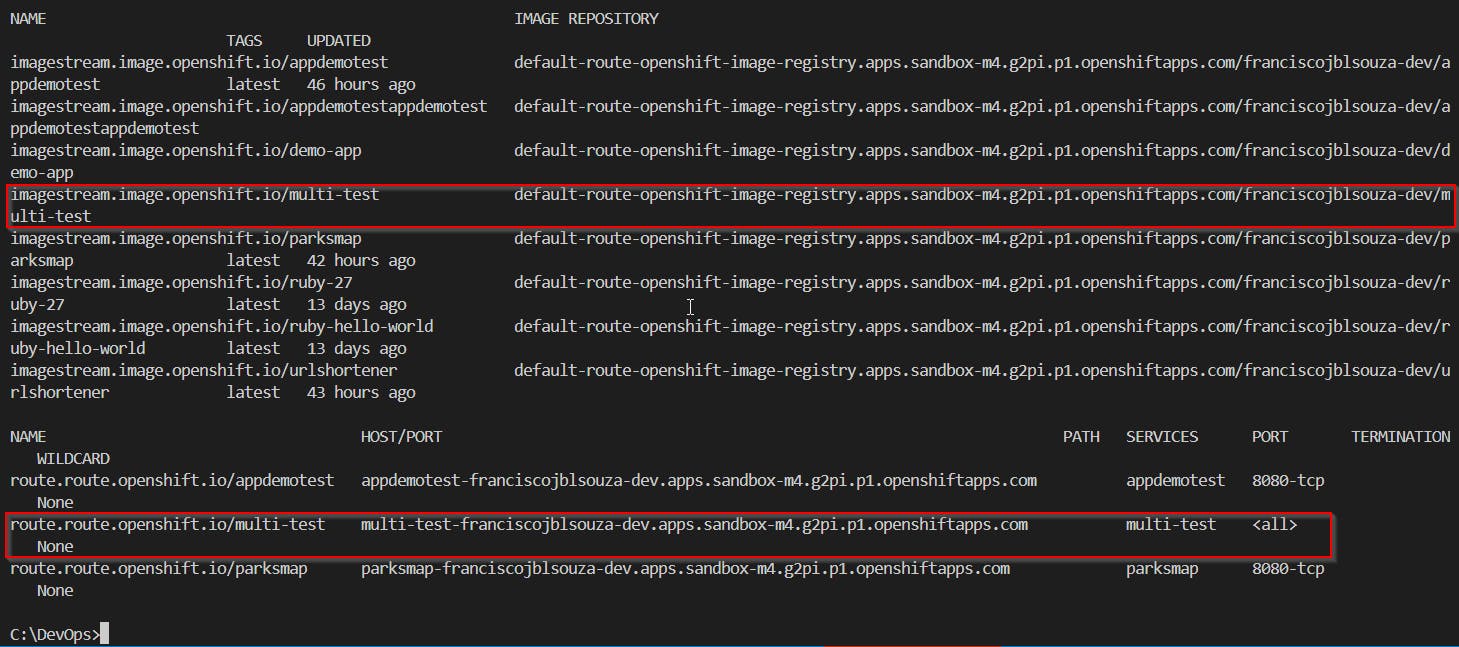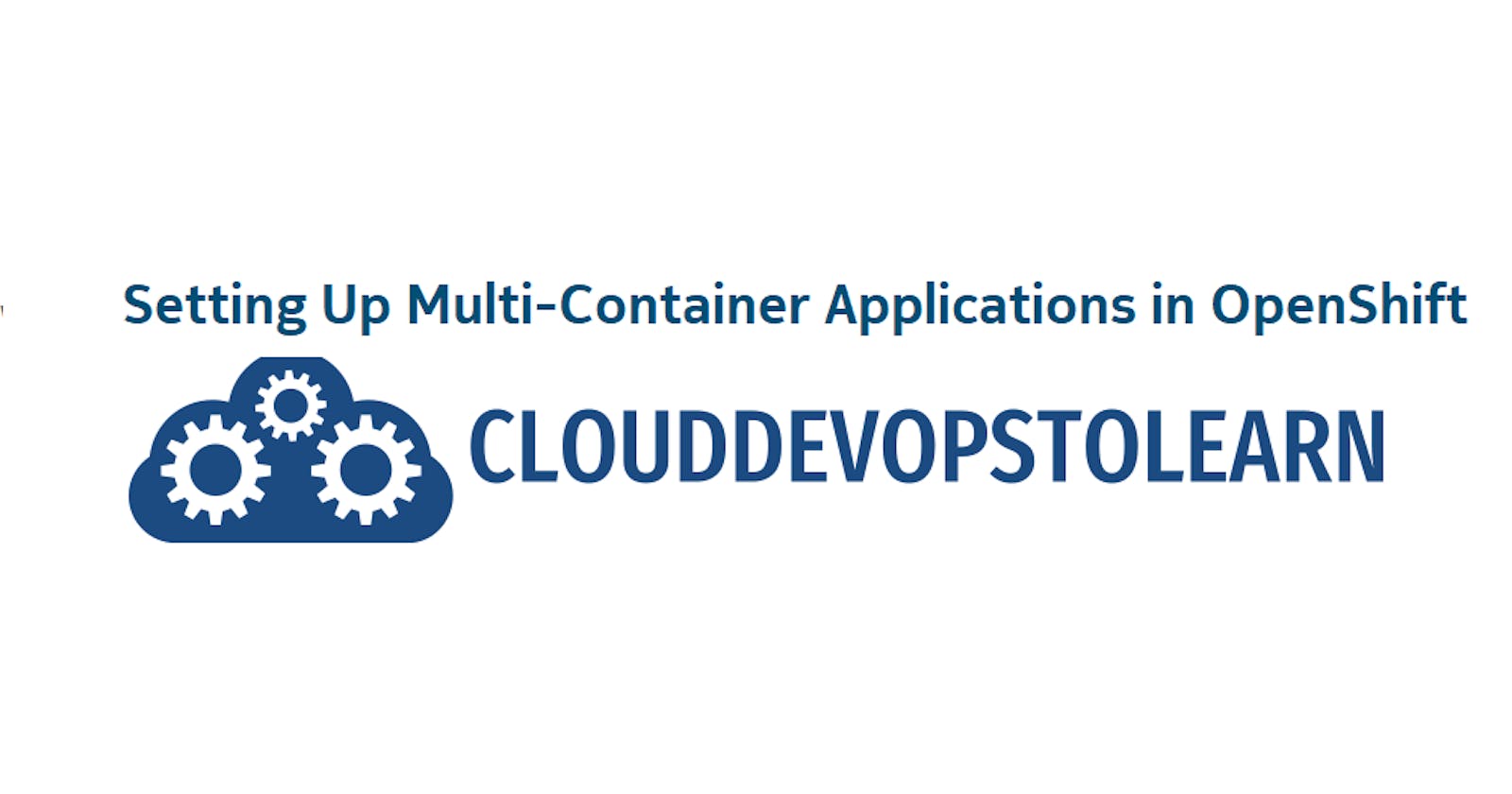OpenShift Hands-On Lab - Setting Up Multi-Container Applications in OpenShift
OpenShift Learning Path for Cloud and DevOps Engineers
Table of contents
- 📝Introduction
- 📝Set Up CodeReady Containers (For those who choose to run it locally)
- 📝Set Up an OpenShift Sandbox (For those who choose to run it online on the Cloud. This was my choice).
- 📝Log In to the Cluster (Option 1)
- 📝Log In to the Cluster (Option 2)
- 📝Download the OpenShift Template and Publish It
- 📝Process the Template and Create the Application
- 📝Verify the Application Is Working
📝Introduction
For this lab, we will be creating an application that has multiple containers. You will learn to work with templates to create a multi-container application.
These are the objectives of this lab:
- Create the New Project
📌Note: This section only applies to students using CodeReady Containers. Skip this section if you are using Red Hat OpenShift sandbox.
Download the OpenShift Template and Publish It
Process the Template and Create the Application
Verify the Application Is Working

📌Note: Due to resource limitations in my Cloud Playground environment, I used the below Red Hat free online resources available for this lab.
To complete this lab, you must first register for a Red Hat Developer login on theRed Hat login page.
Once registered, you may complete the lab steps usingRed Hat's CodeReady Containers or the Red Hat-provided OpenShift sandbox.
Solutions for CodeReady Containers and the Red Hat OpenShift sandbox can be used in this lab. However, I decided to use the free Red Hat-provided OpenShift sandbox available for 30 days.
📝Set Up CodeReady Containers (For those who choose to run it locally)
📌Note: CodeReady Containers has specific hardware and operating system requirements. To ensure your environment is compatible, seeRed Hat's minimum system requirements for CodeReady Containers.
Navigate and log in to your Red Hat Developer account.
Under the Local tab, select your OS and click Download CodeReady Containers.
Click Copy Pull Secret for later use.
Install CodeReady Containers.
📌*Note:For OS-specific installation instructions, see [Red Hat's CodeReady Containers installation guide](access.redhat.com/documentation/en-us/red_h..).*
Open a terminal session and set up CodeReady Containers:
crc setupWhen prompted, enter
yesto enable telemetry data collection ornoto disable telemetry data collection.Start the VM:
crc start📌Note: The cluster takes a minimum of 4 minutes to start before serving a request.
When prompted, paste in the previously copied pull request and press Enter.
Print the command needed to add the cached
ocexecutable to your$PATH:crc oc-envRun the printed command.
Log in as the developer user:
oc login -u developer https://api.crc.testing:6443
📝Set Up an OpenShift Sandbox (For those who choose to run it online on the Cloud. This was my choice).
To log in through the web UI directly, navigate to the Red Hat CodeReady Containers page and log in to your Red Hat Developer account with the credentials you created.
Select Try OpenShift in our free sandbox.
Click Launch your Developer Sandbox for Red Hat OpenShift.
To confirm your account, enter a valid phone number and click Send Code.
Enter the verification code you received and click Verify Code.
Click Start using your sandbox.
Under Log in with, click DevSandbox.
Select the I have read and agree to the Red Hat OpenShift Online Services Agreement and click SUBMIT.
At the top right, click the shell icon (>_).
Leave the default project selected and click Start. Note: You will not be able to create new projects in the sandbox. For any steps in the lab stating you need to create a new project, skip that step and ensure you use one of the existing projects: <username>-dev, or <username>-stage.
📌Note: Type
qto exit a menu or log.
📝Log In to the Cluster (Option 1)
📌Note: This section only applies to students using CodeReady Containers. Otherwise, skip to the next objective.
Log in to the cluster:
oc login -u developer https://api.crc.testing:6443In a new browser, log in to the cluster using the console URL.
Use the
developercredentials to log in.
📝Log In to the Cluster (Option 2)
📌Note: To complete a login using oc in the OpenShift sandbox, click on the shell (>_) icon. Alternatively, you can download the binary and log in from a remote system (e.g. VSCode). Please review the Using Red Hat OpenShift Sandbox video detailing the necessary steps for that process.

📝Download the OpenShift Template and Publish It
Download the template file from this Git repo and save it as a file named
multi_test.yaml:curl <git repo>/multi_test.yaml -o multi_test.yamlList your file.
ls multi-test.yamlclearyour screen.Publish the template to your local project:
oc create -f multi_test.yamlVerify the template is published:
oc get templatesclearyour screen.

📝Process the Template and Create the Application
Process the template with the following custom parameters and create the application using the processed template (this will take a few minutes to build):
oc process -f multi_test.yaml -o yaml -p NAME=multi-test -p DATABASE_NAME=multi_test -p DATABASE_USER=multitest -p DATABASE_PASSWORD=multitest123 -p DATABASE_ADMIN_PASSWORD=multitest321 | oc create -f -
📝Verify the Application Is Working
- View the resources:
oc get all
Scroll down towards the bottom and copy the HOST/PORT route (SERVICES would be fruit-stand) and paste it into a web browser.
- Alternatively, if you are using the web console interface, click on the Open URL icon on the Node.js application.
Within the Namespace under Add/Edit a fruit, enter test-fruit.
Add a value of your choice in the field next to test-fruit (in our examples, we're using 5).
Click Save. You should see the new entry at the bottom of the Fruit List.
- Alternatively, if you are using the web console interface, click on the Open URL icon on the Node.js application.




📌Note - At the end of each hands-on Lab, always clean up all previous resources created to avoid being charged if you used a Cloud Provider to provision them.
Congratulations — you have completed this hands-on lab covering the basics of creating an application that has multiple containers.
Thank you for reading. I hope you understood and learned something helpful from my blog.
Please follow me on CloudDevOpsToLearn and LinkedIn, franciscojblsouza

